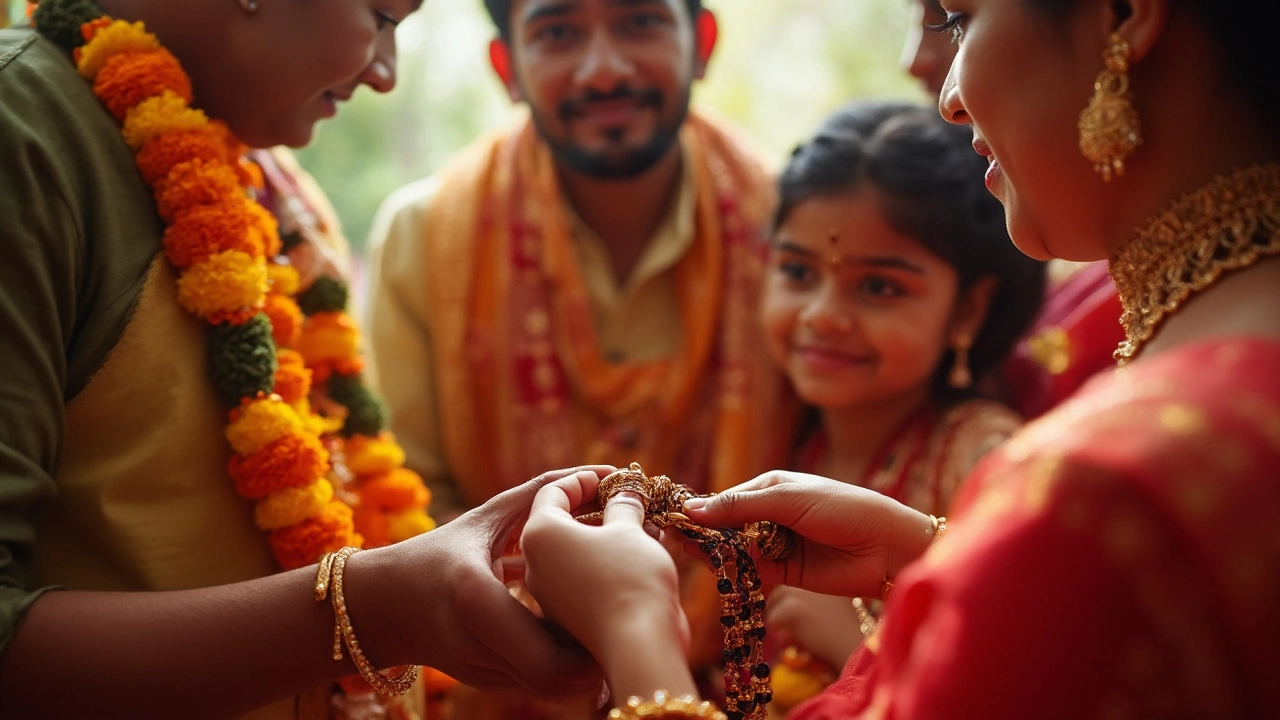Indian Wedding Rituals: Meaning, Symbols and Modern twists
When you hear Indian Wedding Rituals, the collection of ceremonies, symbols and customs that mark a marriage in India. Also known as Indian wedding customs, they blend family, faith and fashion in every step.
One of the most talked‑about symbols is the Mangalsutra, a gold necklace exchanged during the wedding that represents the marital bond. It’s not just a piece of jewellery; it’s a promise that the couple makes in front of their elders. Another key piece is the Choora, a set of red and white bangles the bride wears, often removed later by a close family member. The removal ceremony signals the bride’s transition from her natal home to her new family. Then there’s Sindoor, the red powder applied along the bride’s hair part as a sign of married status, a tiny ritual that carries centuries of meaning.
Key Rituals and Their Meanings
Indian wedding rituals encompass a wide range of events, from pre‑wedding gatherings like the Haldi and Mehndi to the main ceremony where vows are taken. Each step is tied to a specific cultural belief. For example, the exchange of garlands (jaimala) symbolizes acceptance, while the seven vows (saptapadi) link the couple’s destiny with the earth. The rituals also require certain tools – a sacred fire, a priest’s chants and specific auspicious timings – all of which help create a sanctified atmosphere.
While the core symbols stay the same, regional variations add flavor. In Punjab, the bride’s choora is often paired with a matching paranda, while in South India the bride might wear a gold mangalsutra called “thaali”. In many parts of the country, the bindi – a decorative dot on the forehead – shifts from a daily adornment to a ceremonial mark after the vows, linking the bride’s third‑eye energy to her new life.
Modern couples are tweaking these customs to suit their lifestyles. Some choose a minimalist mangalsutra that can be worn daily, while others replace gold with silver or even a sleek chain that matches their everyday look. A few families now let the bride’s siblings remove the choora instead of a maternal aunt, reflecting changing family dynamics. Even the sindoor’s color may vary – from traditional deep red to a subtle pink – showing how tradition adapts without losing its heart.
Understanding these rituals helps you appreciate why each piece of jewellery matters. The mangalsutra isn’t just a necklace; it’s a daily reminder of commitment. The choora’s bright bangles signal joy and the bride’s new role, and the sindoor’s red hue confirms her married status. When you know the story behind each item, you can choose pieces that fit both cultural significance and personal style.
Below you’ll find a curated collection of articles that dig deeper into these customs. From who actually gifts the mangalsutra, to the etiquette around removing choora, to the symbolism behind bindi and sindoor, the posts cover both tradition and contemporary twists. Whether you’re planning a wedding, buying jewellery, or just curious about Indian culture, the insights here will help you navigate the beautiful world of Indian wedding rituals.
